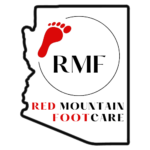How to Relieve Pressure Blisters on Feet
Blisters on the feet can be a painful and frustrating problem for anyone, especially for those who are active or on their feet all day. Understanding the causes, preventive strategies, and the best ways to care for foot blisters at home is essential to maintaining healthy and comfortable feet. Below, we explore how to relieve blisters on feet, from their formation to effective at-home treatments.
Causes of Blisters
Blisters on the feet typically arise as a protective response by the body. These small, fluid-filled bubbles form between the outer layers of skin to safeguard damaged tissue underneath. But what leads to this reaction? Understanding the common causes can help you take proactive measures.
Develop to Protect Damaged Skin
Blisters are the body’s way of cushioning and protecting damaged skin. The fluid inside helps prevent further harm and promotes healing by keeping the underlying tissue moist. This natural defense mechanism ensures that the affected area is shielded from external factors while it recovers.
Friction and Repeated Rubbing
The most common reason for blisters is friction. When shoes or socks rub against the skin repeatedly, especially if they don’t fit well, the top layer of skin becomes irritated and separates from the lower layers. This space fills with fluid, leading to a blister. High-intensity activities like running or hiking can increase the risk.
Burns and Skin Reactions
Aside from friction, blisters can also develop from burns, including sunburns or contact with hot surfaces. Chemical reactions or exposure to harsh substances might trigger a similar protective response from the skin.
New or Improperly Fitted Shoes
Breaking in new shoes often comes with the risk of blisters. Shoes that are too tight, too loose, or poorly constructed can create rubbing points that cause painful blisters. Wearing ill-fitting or poor-quality socks can amplify friction and moisture buildup, two primary factors that lead to blister formation. Cotton socks, which trap moisture, can be particularly problematic.
Preventing Footer Blisters
Prevention is better than cure when it comes to blisters. Taking the right steps can minimize your risk and save you from unnecessary discomfort.
Protect your feet
Start with foot care. Keeping your feet moisturized helps maintain soft, pliable skin, making it less likely to blister. Apply foot creams or petroleum jelly before putting on socks, especially if you plan to engage in long walks or strenuous activities.
Wear the Right Socks
Choose socks that wick moisture away from your skin to reduce friction. Materials like nylon, merino wool, or specially designed moisture-wicking fabric are excellent choices. Avoid cotton socks, as they can become saturated with sweat and increase the chances of developing blisters.
Properly Fitted Shoes
Ensure your shoes fit well—neither too tight nor too loose. Shoes that have a snug fit prevent sliding and reduce friction. If you buy new shoes, break them in gradually by wearing them for shorter periods initially.
At Home Treatments for Foot Blisters
If you’ve developed a blister, caring for it properly can make a big difference in how quickly it heals and how much discomfort you experience.
Avoid Popping or Draining
As tempting as it may be to pop a blister, doing so can lead to infection and slow down the healing process. The fluid inside the blister acts as a natural barrier against bacteria, promoting faster recovery.
Cover It Carefully
Cover your blister with a breathable bandage or dressing. This will help keep it clean and protected from further friction. Using moleskin bandages can provide extra padding and support, preventing additional irritation.
Try Using Moleskin Bandages
Moleskin is a thick, soft material that adheres well to the skin, making it an ideal choice for protecting a blister. Cut a hole in the center of the moleskin and place it around the blister, leaving the blister itself untouched but shielded from pressure.
Keep It Clean
Maintaining proper hygiene is crucial to avoid infection. Wash your feet gently with soap and water, then pat them dry. Avoid applying harsh antiseptics, as they can dry out the skin and delay healing.
Monitor for Signs of Infection
Even with proper care, there’s a risk of infection, especially if the blister bursts on its own. Keep an eye out for redness, swelling, warmth, or pus. These could be indicators that the blister is infected and may need medical attention.
Signs of Infection
Knowing when to seek medical help is essential. Some signs that a blister may be infected include:
- Increased redness or streaks extending from the blister
- Swelling that persists or worsens
- Pus or yellowish fluid draining from the blister
- Severe pain or a throbbing sensation
- Fever or chills
Diabetics
If you are a diabetic, any blister on your foot means you should always see your podiatrist or primary care physician
People Also Ask
Should You Cover a Blister or Let it Breathe?
Covering a blister is generally best, as it protects the area from friction and bacteria, promoting healing.
Do Blisters Heal Faster, Covered or Uncovered?
Blisters heal faster when covered, as this keeps the area clean, moist, and protected from further irritation.
Should I See a Doctor About a Blister?
You should see a doctor if the blister shows signs of infection, such as redness, swelling, pus, or severe pain.
Ankle and Foot Doctor in Mesa, AZ
If you’re dealing with persistent foot or ankle issues or have concerns about blisters that don’t heal properly, professional care can make all the difference. At Red Mountain Footcare, our team of experts is dedicated to providing personalized treatment and ensuring your feet stay healthy and pain-free. Don’t let foot discomfort slow you down—set an appointment today to get specialized, compassionate care. Your comfort and mobility are just a step away. Visit Red Mountain Footcare and take the first stride toward optimal foot health!
